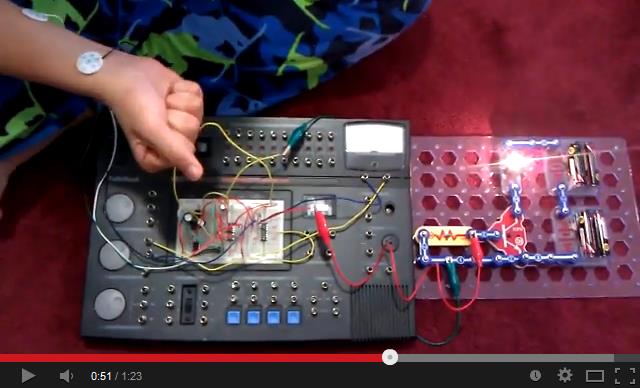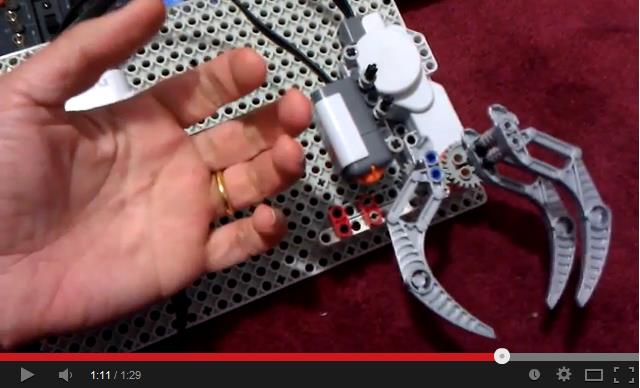Prototype Toy Allows Kids to See Effects of Body’s Electrical Signals
SPARK Competition prize awarded to Robijanto Soetedjo, MD, PhD, for prototype toy allowing kids to explore electrical signals from the human body. Dr. Soetedjo created platform while trying to explain his research to his own children — Dr. Soetedjo is a neuroscientist with the University of Washington and Washington National Primate Research Center. The Gordon and Betty Moore  Foundation and Society for Science & the Public awarded Dr. Soetedjo a second place prize worth $25,000 for their Science, Play and Research Kit (SPARK) challenge to reinvent a chemistry set for the 21st century.
Foundation and Society for Science & the Public awarded Dr. Soetedjo a second place prize worth $25,000 for their Science, Play and Research Kit (SPARK) challenge to reinvent a chemistry set for the 21st century.
Dr. Soetedjo developed a toy set that children can experiment with to see the effects of the electrical signals produced by their muscles, their hearts, and even their brains. Electrodes are attached to a part of the body, such as the forearm, and to another device that shows them the effects of their electrical signals. For example, by tightening a hand grip, the child can turn on a light, spin a propeller, control a motor or (through an audio amplifier) emit a sound. The toy set can also interface with a range of computer devices and helps opens up the space of neuroscience and biofeedback as areas for children to explore in play.
SPARK Competition
The SPARK Competition focused on science beyond chemistry, challenging the nation’s most creative minds to develop projects and ideas that will encourage imagination and interest in science and technology, inspiring today’s children – often through immersive play and learning through doing. Many of today’s scientific  innovators – including Moore Foundation and Intel co-founder Gordon Moore – attribute their early fascination with science to their childhood chemistry sets. Yet, the chemicals in these classic sets are now illegal and replacement sets often lack elements of excitement and wonder. The competition sought to elicit new catalysts that could foster the persistent curiosity and creativity that lead to longer term engagement in science and engineering, as well as to put a spotlight on the importance of experiences that ensue from unscripted exploration and tinkering.
innovators – including Moore Foundation and Intel co-founder Gordon Moore – attribute their early fascination with science to their childhood chemistry sets. Yet, the chemicals in these classic sets are now illegal and replacement sets often lack elements of excitement and wonder. The competition sought to elicit new catalysts that could foster the persistent curiosity and creativity that lead to longer term engagement in science and engineering, as well as to put a spotlight on the importance of experiences that ensue from unscripted exploration and tinkering.
“As a whole, these [SPARK] winners conveyed an exciting variety of ways to get kids hooked on science and engineering,” said Paul Gray, PhD, interim president of the Moore Foundation.
One hundred twenty-five entries were received in the competition, which awarded a total of $136,000 in prize money. Sixteen projects were selected for recognition. View a full list of the winners. Entries went through several rounds of judging by groups of independent evaluators selected for their scientific, engineering or education expertise.
Read more about Dr. Soetedjo’s award-winning home invention in an article from the Seattle Times published April 9, 2014.
This is a personal project for Dr. Soetedjo and no state-funded time was
spent working on this personal endeavor.